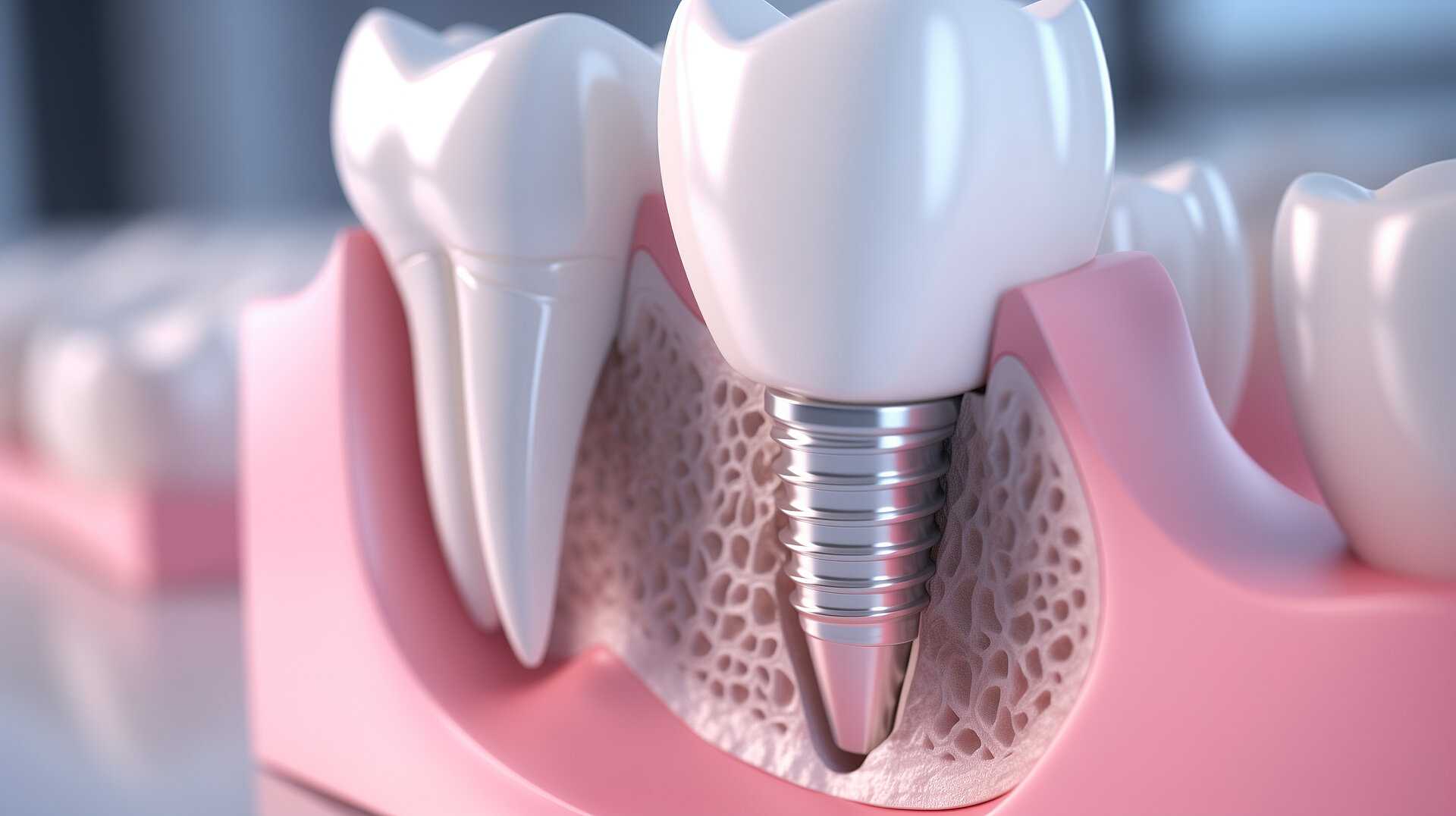Titanium Implant Intolerance
Titanium is widely used in dentistry and orthopaedics as a material for implants and prostheses. In addition to its high mechanical stability and excellent resistance to corrosion, the material's good biocompatibility is considered one of its main advantages. However, increasing numbers of case reports and clinical studies in the specialist literature on dental and joint prostheses document that titanium implants can trigger undesirable inflammatory reactions (titanium implant intolerance) in the tissue surrounding the implant. This intolerance is rarely the result of a classic allergic reaction; instead, it is typically due to heightened reactivity of cells in the innate immune system to corroded titanium particles.
How does titanium implant intolerance manifest?
The incidence of titanium-induced peri-implantitis (inflammation around the implant site) is estimated to affect around 15% of the general population. An existing inflammatory environment may increase titanium corrosion. These inflammatory responses, known as peri-implantitis, may manifest as:
- Localised or generalised eczema
- Persistent swelling
Such symptoms can prevent the successful integration of the implant into the bone or lead to implant loosening. In addition, systemic inflammatory responses can result in general or often vague symptoms such as:
- Fatigue
- Flu-like symptoms
- Muscle and joint pain
- Neurological symptoms
These may not immediately be recognised as being caused by titanium intolerance.
Diagnosing Titanium Implant Intolerance
Due to the various immunological mechanisms that can underlie titanium intolerance, the diagnostic strategy must take into account the specific trigger: Is it the titanium itself, an alloying element, or a contaminant in the implant? In cases of manifest peri-implantitis, an assessment of immune reactivity to metals should always be conducted in addition to the essential titanium stimulation test.
The standardised 3HT-Memory-Spot®, based on the principle of the Lymphocyte Transformation Test (LTT), is a suitable diagnostic tool. In terms of specificity and sensitivity, it represents a valid alternative to the patch test.
This cellular function test is conducted in vitro, requiring only a blood sample from the patient. Therefore, the 3HT-Memory-Spot® avoids the risk of sensitisation to a contact allergen, which may occur during a patch test. Moreover, it allows for the investigation of symptoms not limited to the skin but also affecting internal organs or presenting as non-specific complaints.
Titanium Stimulation Test
This whole-blood stimulation test individually assesses whether the patient's monocytes/macrophages respond to titanium particles with excessive mediator release.
A positive result in the titanium stimulation test indicates a predisposition for titanium-induced hyperreactivity of monocytes/macrophages. However, this alone does not constitute an absolute contraindication for titanium implants.
3HT-Memory-Spot® “Titanium Implants”
This panel tests T-cell reactivity to common metals found in titanium implants such as aluminium, nickel and vanadium—but not titanium itself, as only isolated positive test results have been reported for this metal. Sensitisation in the context of a type IV allergy is considered present if cell proliferation in the microcultures containing the potential allergen significantly exceeds that of the unstimulated control cultures.
The clinical relevance of a sensitisation detected via T-cell reactivity can be further verified by using a patch test. If the result is positive, the use of implants containing the sensitising metal should be avoided.
Testing of Custom Implant Materials
If a specific sensitisation is suspected, individual prosthetic and implant materials can also be tested using the 3HT-Memory-Spot®. As lymphocyte stimulation in this test occurs in a liquid culture medium, the individual material must be submitted to the laboratory at least two days before the blood sample is received. This allows for time to prepare ready-to-use stimulation solutions. The material sample is generally not destroyed in the process and can be returned to the sender upon request.

